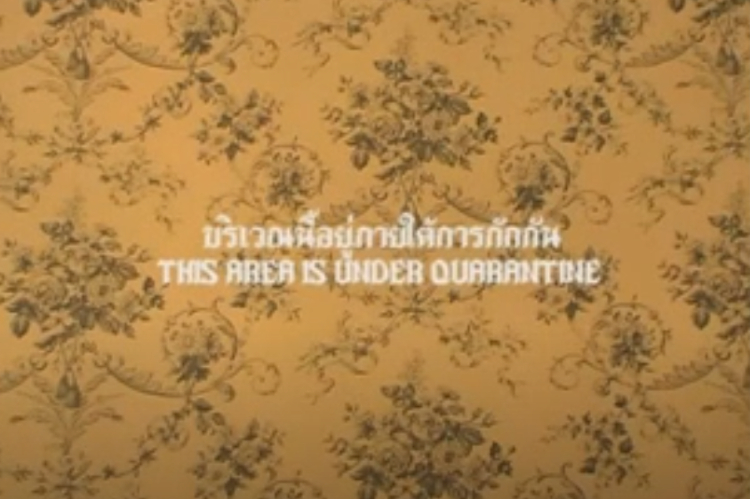In a prologue with a painted backdrop resembling Tears Of The Black Tiger, we learn about the Genpei War, a conflict between rival Genji and Taira gangs. Then, in an isolated town, the descendants of the rival groups prepare for a showdown, with one side in white and the other in red. I was reminded of the current political situation in Bangkok: two sides and two colours (anti-government, in yellow; pro-government, in red) facing each other in a violent confrontation.
The lead character is a lone cowboy (clearly inspired by Clint Eastwood's character in A Fistful Of Dollars, itself derived from Akira Kurosawa's Yojimbo) who arrives in town, proves he is quick on the draw, then puts an end to the feud between the two gangs by defeating both of them (just as Eastwood's character does). The stoical cowboy's role is not substantial, though, as he mostly bides his time until the final duel. Arguably more central to the story is a silent young boy whose mother and father belonged to different gangs.
Miike has put a Japanese twist on the Italian spaghetti western genre, a genre which was itself partly inspired by Japanese cinema - A Fistful Of Dollars was an unofficial Yojimbo remake. There have been similar attempts from other countries, the closest equivalent to Miike's being the Japanese 'noodle western' Tampopo. From India came the 'curry western' Sholay, and the Spanish film 800 bullets has been called a 'marmitako western'. This year, the South Korean The Good, The Bad, & The Weird was marketed as a 'kimchi western'. There are also 'borsch westerns' from Russia, 'Spätzle westerns' from Germany, 'kartoffel westerns' from Denmark, 'boureka westerns' from Isreal, 'camembert westerns' from France, and 'paella westerns' from Spain.
Pulp Fiction director Quentin Tarantino makes an amusing cameo appearance in the prologue, wearing a poncho in another echo of Clint Eastwood; when we return to his character near the end of the film, however, he has become a ridiculous old man in a wheelchair. Other characters are equally implausible. Neither gang leader is remotely menacing: one rolls his eyes, cowers behind his men, and recites Shakespeare very badly; the other has the weak-looking, lithe physique of Russell Brand. The most absurd character is the sheriff, who becomes severely schizophrenic in an unsuccessful attempt at slapstick comedy.
The film's dialogue is delivered in English, though the actors are largely Japanese, and their thick accents make many of their lines incomprehensible. There is stunning cinematography in several sequences, notably the prologue with its artificial backdrop and a couple of scenes with stylised blue lighting, though the characters and dialogue make it hard to take the film seriously. (The version released in Japan is twenty minutes longer.)

